Искусство и культура. Рубрика в журнале - Бюллетень науки и практики
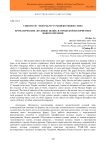
Chromatic “zero signs” in modern period cities
Статья научная
The research object is the chromatic “zero sign” understood as a meaning without a form, as an absence of positive significance, which should have been presented analogically with the other syntagmas, where a sign with the same meaning has an explicit form. The goal of the study is to undertake a theoretical reconstruction of ways and means through which “zero signs” manifested themselves in the urban space of the modern period. The paper discusses differences between “zero signs” and index signs, reveals the functions of “zero signs” in the European urban environment of the modern period. It contains the description of colour limitations and appeals for practically complete negation of colour (for usage of chromatic “zero signs”) presented in the documents regulating urban colouring of Germany, France, Italy, Russia and other countries of the 18th-19th centuries. Practical recommendations of how to choose colours, suggested by F. C. Schmidt in his book “People’s architect” are analysed. Content of ordinances of Paris authorities, the structure of the colour plan of Turin, related to colour decrees of the Russian Empire are discussed. The idea of imitation of the constructed urban spaces to the ancient ones is considered as a basis of colour negation in urban coloristics. It is shown that the concept of “zero sign” opens wide prospects for the analysis of sign systems outside a natural language, namely a system of urban colouring where cases of colour negation of city objects are rather frequent throughout the course of history of urban settlement development.
Бесплатно
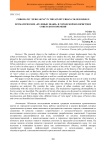
Chromatic “zero signs” in the Soviet urban colour design
Статья научная
The research object is the tradition of сhromatic colours displacement from the urban environment. The main goal of the study is to analyse the role, that chromatic “zero signs” played in the environment of Soviet cities and towns, and to reveal their semantics. The findings and key principles of semiotics are used as the main theoretical and methodological research tool. Urban coloristics is seen as a language based on a system of interrelated oppositions, and the non-use of color in urban space is discussed in the context of the role of “zero signs” in sign systems outside the natural language. The author provides an analysis of the history of the development of urban colouristics and, on this basis, justifies the idea of importance for studying and understanding of “zero” colour as a semiotics object the “reflexive symmetry” principle and the usage of an ethnolinguistic strategic line of the analysis as well as a social and cultural one. The paper reveals the unique additional shades of meaning that the non-use of colour in urban coloristics acquired due to a special socio-cultural situation of the Soviet period. The social structure of Soviet urban society and its change under the influence of urbanization and rural migration are analyzed. We consider the value system of urban residents and analyze its relationship with the social division of urban space. The mechanisms supporting chromophobia in Soviet society are described. The specifics of Soviet urban spaces are discussed in comparison with the cities of the rest of Europe. Based on the analysis of architectural features of constructivism, neoclassicism, and Stalin empire style, different forms of “zero signs” in the space of Soviet cities and towns are identified and characterized.
Бесплатно
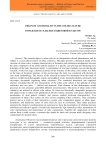
Urbanity and rurality in the color culture
Статья научная
The research object is urban color as an independent cultural phenomenon, and its subject is a sociocultural context of urban coloristics. The paper presents a theoretical model of the structure of urban color, contains characteristics of formation and interaction mechanisms between the main components of the model and the analysis of a specific case proving and illustrating core principles of the basic theoretical model. A combination of two basic methods was used during the research. At the first stage a theoretical model of the structure of the urban color culture was built on the basis of document analysis. At the second stage the study was conducted with the help of case-study methodology. The sources of the research accounted for documents from the funds of archives, architectural photographs, artistic and graphical works, multicolored photo-postcards with cityscapes, documents regulating urban coloristics. The conducted theoretical and empirical analysis concluded that the key characteristic of the urban color culture is the splitting of urban coloristics into two parts - official and domestic. Each element of this dichotomous model possesses its own semantics and fulfills different social functions. The norms of urban mode of life (urbanity) are realized in official color culture. Its colors are historically changeable, progressive and subject to the so called color globalization. On the contrary, domestic color spaces represent the peculiarities of rural pattern (rurality) and possess marked territorial characteristics. [A1] Two components of urban color culture not only coexist compiling urban coloristics. They constantly interact and as a result of their interaction a certain color composition appears in urban space. Synchronic and diachronic layers of color field are easy to reconstruct. They rather precisely represent the character and disposition of social power, show the peculiarities of relations between individual and collective agents of social field, characteristic sign-symbolical codes, mechanisms of color representation and maintenance of color connotations. Together the components of urban culture form a stable system, a structure that should be taken into account while designing color compositions for modern cities.
Бесплатно
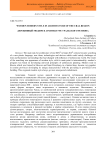
Wooden modern style in architecture of the Ural region
Статья научная
The main task for architecture of end XIXth to begin XXth century became searching of a new plastic language, new ideas, technologies and devices which could satisfy challenges of time and harmonize surroundings that had changed with influence of technocratic world. The result of the searching was appearance of modern style, with its main point is internationality; modern’s program was based on developing universal principles of architecture planning. Modern style in Russia, which was formed in Moscow and Saint Petersburg, in a limited time, became very popular in remote provinces developing its unique characteristics with the prevailing in provincial town building. Thus regional modern style always got new unexpected embodiment.
Бесплатно
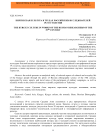
Киргизская культура в трудах российских исследователей 19-го столетия
Статья научная
В статье представлено аналитическое исследование отдельных аспектов культурно-бытовой жизни киргизского народа через призму российской этнографической науки 19 столетия, представленную записками, отчетами и путевыми заметками участников военных походов, а также научными трудами по результатам многочисленных научных экспедиций в Туркестан.
Бесплатно

Клеточное моделирование динамики монохромной городской колористики
Статья научная
Объектом исследования является городская колористика, предметом - прогностическое моделирование ее возможных изменений. Цель работы - применение клеточной модели для изучения динамики монохромной городской колористики, главный принцип которой - использование в оформлении как можно большего количества архитектурных фасадов населенного пункта одного и того же цвета. В исследовании использовалась готовая модель клеточного автомата, созданная с помощью приложения NetLogo. В настройках задавались параметры, соответствующие статистическим данным города Нойштадта (Германия). Модель позволяла контролировать размеры матрицы и временной горизонт, скорость изменений, начальное соотношение домов определенного цвета. Эволюция системы рассматривалась для матриц размером 44 на 44, 20 на 20 и 10 на 10, на временном горизонте в 100 тактов. Применение клеточной модели позволило значительно расширить границы анализа городской колористики. Полученные эмпирические данные дали возможность выявить существенные характеристики механизмов развития монохромной модели городской колористики и определить их темп. С помощью клеточного автомата были установлены пороговые значения, запускающие принципиально различные типы адаптации новой цветовой традиции и выявлена их зависимость от выбора расположения перекрашенных по-новому построек в цветовом поле города. В перспективе применение клеточных автоматов в ходе планирования городской колористики может дать принципиально новые результаты описания механизмов возникновения сложного поведения из простых действий, визуализации происходящих изменений и анализа их будущих состояний.
Бесплатно
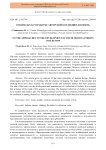
О подходах к разработке авторской коллекции "Blossom"
Статья научная
В работе проведен анализ модных тенденций предстоящего сезона. Изучены современные технологии и их использование в одежде с целью формообразования изделия и создания декора, проанализирован современный рынок текстиля и материалов. Целью работы стала разработка и изготовление коллекции одежды. Выявлено что, особенностью тенденции этого сезона, является многослойность. Разработанная коллекция одежды предназначена для современной и творческой девушки. Модели сочетают в себе несколько стилистических решении, что позволяет их комбинировать между собой. Проект можно применить для индивидуального и массового производства.
Бесплатно
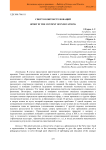
Статья научная
В статье представлен критический взгляд на спорт как феномен Нового времени. Такое представление актуально в связи с усиливающимися попытками придать спортивной деятельности педагогический характер, решать посредством спорта задачи воспитания и образования подрастающего поколения. Один из доводов для обоснования данных попыток - инновационность спорта. В связи с этим была сделана попытка рассмотреть спортивную практику в контексте новаций. Во-первых, было показано, что прогресс и новации становятся ведущими мотивами эволюции человечества только с началом Нового времени. Это также время рождения спорта как современного социального феномена. Во-вторых, стремление к новациям постепенно оказалось сопряженным с осуществлением противоположного по сути импульса - стандартизацией и нормированием, которые сначала определили производственную сферу, а затем проникли и в другие сферы человеческой жизни, в частности, в образование и спорт. В-третьих, осуществление новаций в спорте пошло по пути, который порождает серьезные проблемы. С одной стороны, это конкуренция технического оборудования и инвентаря, когда человек во все большей степени становится лишь их придатком («технические новации»). С другой стороны, достижение высоких результатов во многих видах спорта происходит за счет применения допинга («химические новации»). Проведенный анализ закономерно приводит к вопросу о перспективах дальнейших новаций в спортивной практике, когда в XIX в. по отношению к телу и телесности человека был установлен ограничивающий предикат «физическая(ое)» («физическая культура», «физическое воспитание» и т. п.), и когда достижение максимально возможного результата становится единственной целью.
Бесплатно

